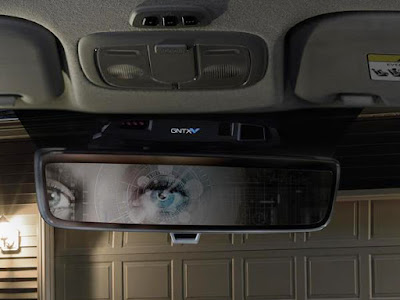Fingerprints and facial scans are now commonly used for mobile security, ID cards and banking. Other biometric authentication methods such as full palm prints, vein and voice recognition, keystroke recognition and even DNA sequencing are starting to see use with mobile devices, banking, and applications such as driver’s licenses and passports. Smartphones account for about 90% of biometric technology use. Add in tablets, notebooks and smart bank cards, and that figure is closer to 99%. The use of biometric technology is growing and being adapted to new applications. Here are 5 you may not be aware of.
Automotive Personalization
Luxury car makers are experimenting with biometrics technology such as gait recognition (the way one walks) for anti-theft security checks before unlocking or starting cars. New uses for biometrics include personalizing the driver’s environment. Gentex has created a rear view mirror with retinol scanner that will adjust the seat or steering wheel to the driver’s preference, queue up the user’s music preferences and more.
The Internet of Things and Retail
Besides automobile biometrics, huge potential biometric growth exists with The Internet of Things (IoT). IoT is basically the concept of connecting any device with an on and off switch to the Internet (and/or to each other). Biometrics is on its way to being used to power meters on a house, or a whole security system. Daniel Ashraf, senior VP of biometrics for Gemalto, states “With the evolution of interconnected rooms using online resources, identifying an individual on the other side of the network is crucially important.”
Biometrics can be used in a retail environment to manage the use of clerks working at cash registers, and for tracking a buyer’s interests and preferences in a store as they look at displays and specific items.
Shoe Fitting
An end is in sight for the discomfort of breaking in a new pair of shoes. Iovado is a luxury shoe company using a full 360 degree scan of your foot to help create hand-crafted shoes that fit you perfectly. The scan uses a smartphone app to create a 3D model of your foot in about 10 minutes.
Traffic Stop Identification
Some police departments now have mobile fingerprint scanners that can prove the identity of a person stopped for a traffic violation when driving without ID. Not everyone's fingerprint is in the system, but as fingerprinting is now required for many type of jobs and applications, the database grows quickly. Also, a mobile fingerprint scanner may be used when suspicious or dangerous individuals are stopped while driving. Results are returned quickly, usually within three minutes.
Biometric Dating
Biometrics is being applied to dating in all sorts of interesting ways. Some dating websites are using facial biometrics to determine a compatible match by reading facial features and emotional reactions. At least one software app tries to the verify whether your date is real or nor by using facial recognition to check other online social media and meet-up sites. This may become an essential “catfish” prevention technique. Another app checks your heart rate while considering potential dates to signal your attraction and readiness to connect. One can only imagine the creative uses of biometrics for matchmaking in the future.
5 Uses for Biometric Technology You Didn't Know Existed
By Peter Brown, July 21, 2017, electronics360.globalspec | Industrial Electronics
A Simple Explanation Of 'The Internet Of Things'
By Jacob Morgan, May 13, 2014, Contributor, Forbes, Inc.



